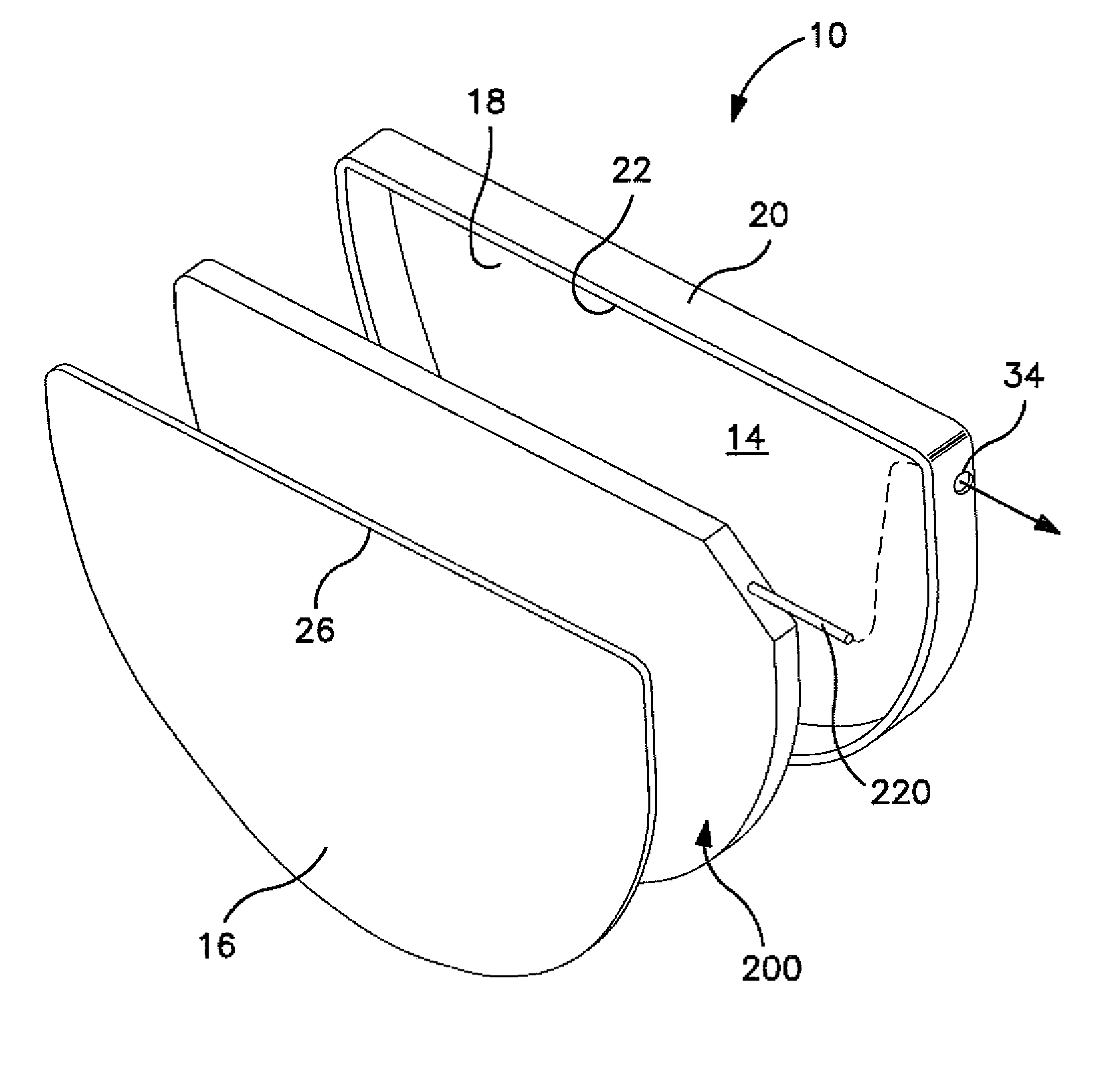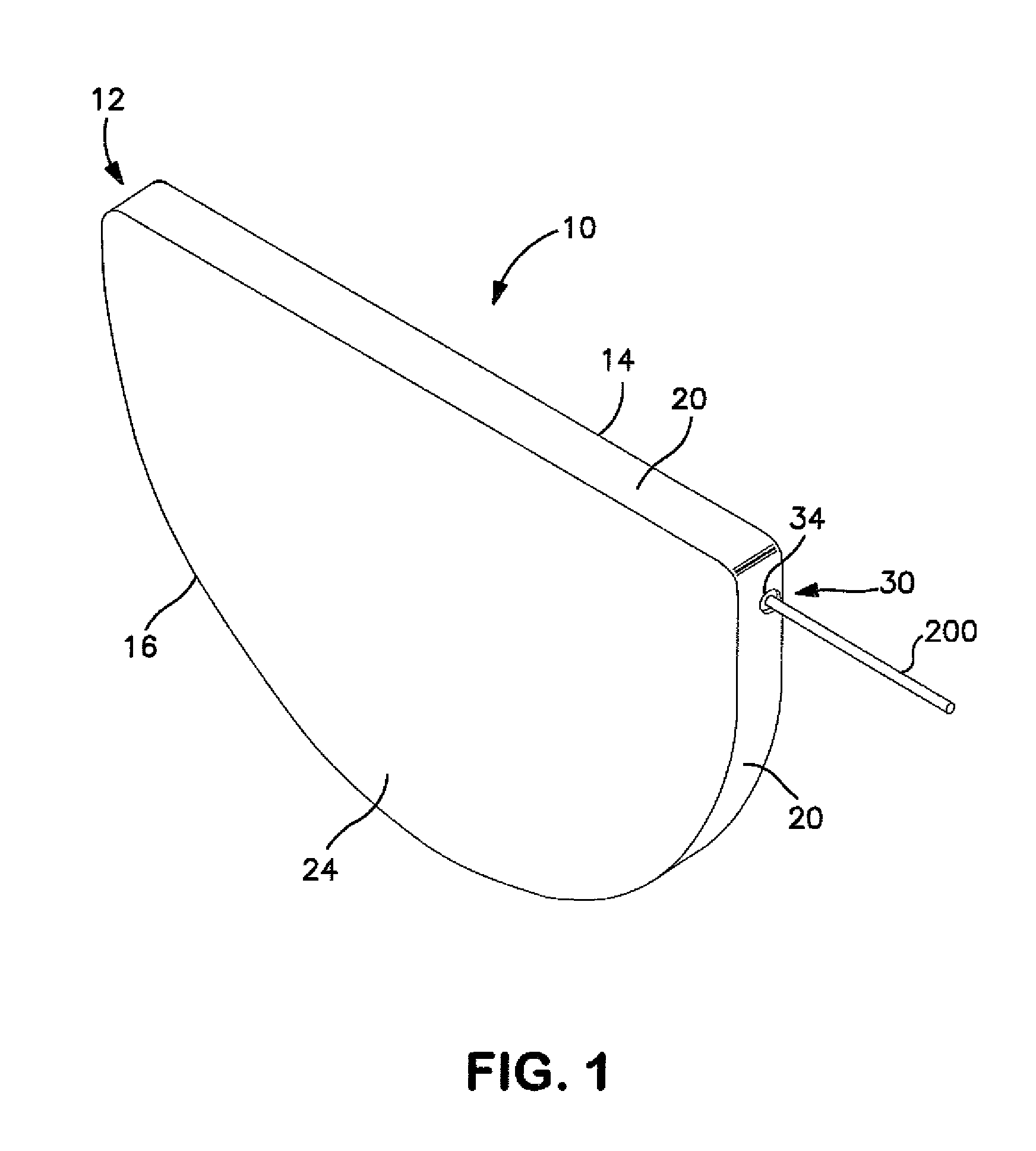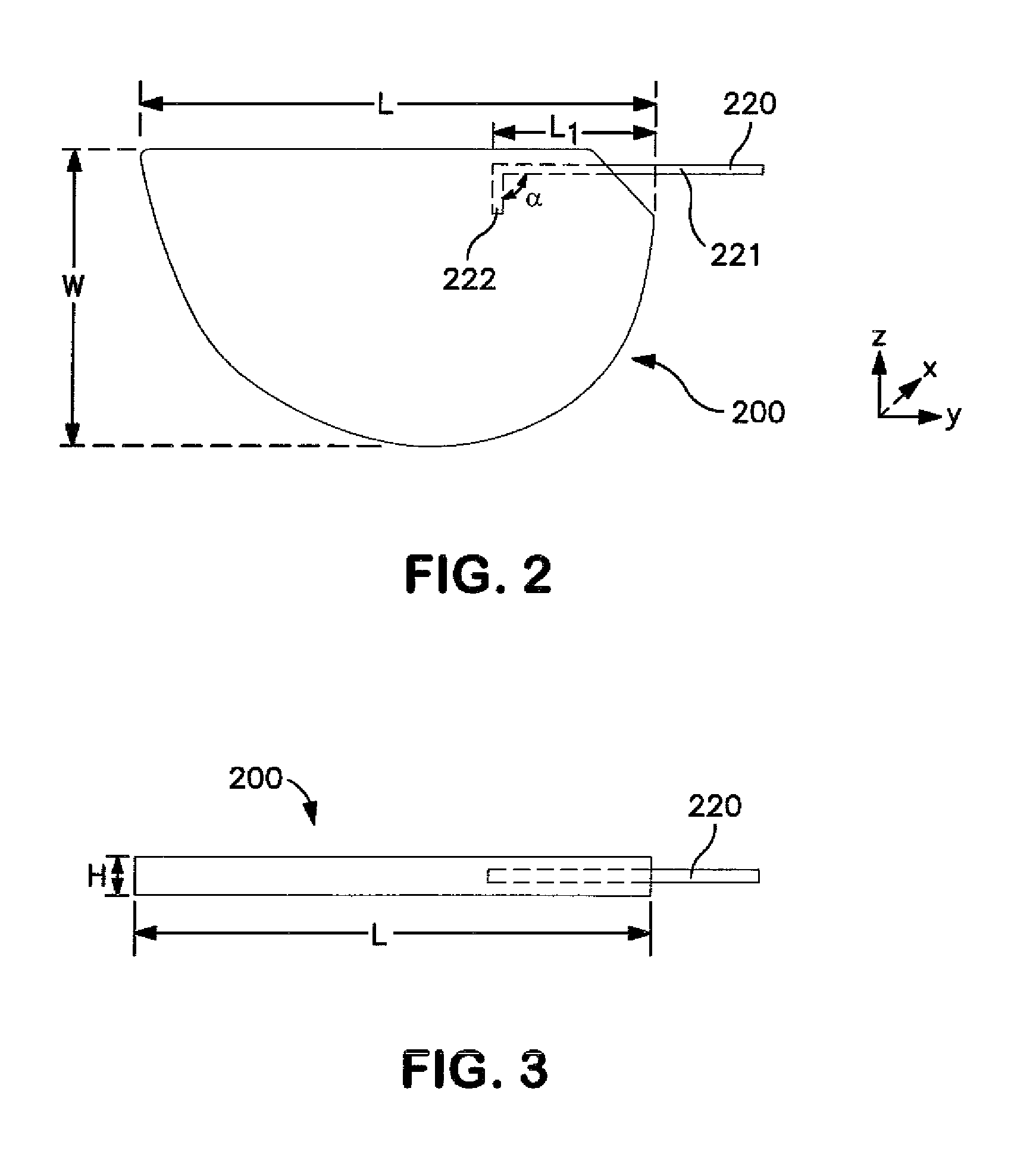Wet electrolytic capacitor containing a gelled working electrolyte
a technology of working electrolyte and wet electrolytic capacitor, which is applied in the manufacture of capacitors, variable capacitors, electrolytic capacitors, etc., can solve the problems of high esr and frequency sensitivity of tadium pellets, especially compounded, and achieve the effect of improving the sensitivity of capacitance to frequency
- Summary
- Abstract
- Description
- Claims
- Application Information
AI Technical Summary
Benefits of technology
Problems solved by technology
Method used
Image
Examples
example 1
[0082]An anode for use in the capacitor of the present invention was formed in the following manner. Initially, both ends of a pre-cut tantalum lead wire were bent. The bent wire was placed into a slot in the bottom half of a mold. The cavity of the mold was then filled with C255 flake tantalum powder (Cabot Corp.) and polyethylene glycol lubricant (0.5%). A hydraulic press was used to compress both sides of the powder to a density of about 5.0 g / cm3 density. The samples were vacuum sintered in a multi-stage process at a temperature from 800° C. to 1675° C. Upon sintering, all of the samples were dipped into a solution containing 50% glycol / water with H3PO4 at a temperature of 85° C. and a conductivity of 1.3 mS / cm. A current was applied until the formation current density was 45 mA / g and the voltage was 200 volts. A second formation was then performed at a current density of 23 mA / g and formation voltage of 236 volts. Following these formations, the oxide was annealed in air at 380...
example 2
[0083]A cathode for use in the capacitor of the present invention was formed in the following manner. A sheet of 0.127 mm thick titanium foil was cut to the dimensions of 45 mm×25 mm. One side of the foil was sandblasted using SiC media for 10 s and then cleaned in an ultrasonic bath using Alconox soap (11 wt % solution) for 10 minutes. The sheet was then rinsed with flowing deionized water and dried in air at ambient temperature. A nickel lead wire (0.50 mm diameter×45 mm long) was attached to the smooth side of the sheet by spot welding the wire onto a corner of the foil.
[0084]Two cathode plates were used to sandwich one anode so the lead wire for a second cathode foil was spot welded in the mirrored corner of a second piece to make a set. After attaching the lead wires, the smooth side of the metal foil was masked with Kapton™ adhesive tape. Clevios™ CB-40 was poured into a glass crystallization dish and the titanium foils were placed into the dish. The crystallization dish was f...
example 3
[0085]A working electrolyte for use in the capacitor of the present invention was formed according to the following procedure.
[0086]1. Pour 536.0 g of deionized water in a 2000 ml glass beaker with a magnetic stir bar;[0087]2. Add 213.0 g of ammonium adipate and mix to complete dissolution;[0088]3. Add 10.0 g 4-nitrobenzoic acid, mix for 10 minutes;[0089]4. Add 258.0 g ethylene glycol, mix to complete dissolution;[0090]5. Add 0.3 g 3-methyl-4-nitrobenzoic acid, mix to complete dissolution;[0091]6. Add 7.5 g ethylenediaminetetraacetic acid and mix to complete dissolution; and[0092]7. Add 5.0 g phosphoric acid and mix for 5 min.
[0093]The pH value of the resulting solution was 6.5 and the conductivity was 44.3 mS / cm. Gelling of the above electrolyte was accomplished by using fumed silica (Sigma Aldrich). 94 g of the above electrolyte was initially poured into a 250-ml beaker and then 6 g of fumed silica (0.007 μm) was added to the electrolyte. An ultrasonic dismembrator (Fisher Scienti...
PUM
| Property | Measurement | Unit |
|---|---|---|
| temperature | aaaaa | aaaaa |
| phase angle | aaaaa | aaaaa |
| phase angle | aaaaa | aaaaa |
Abstract
Description
Claims
Application Information
 Login to View More
Login to View More - R&D
- Intellectual Property
- Life Sciences
- Materials
- Tech Scout
- Unparalleled Data Quality
- Higher Quality Content
- 60% Fewer Hallucinations
Browse by: Latest US Patents, China's latest patents, Technical Efficacy Thesaurus, Application Domain, Technology Topic, Popular Technical Reports.
© 2025 PatSnap. All rights reserved.Legal|Privacy policy|Modern Slavery Act Transparency Statement|Sitemap|About US| Contact US: help@patsnap.com



